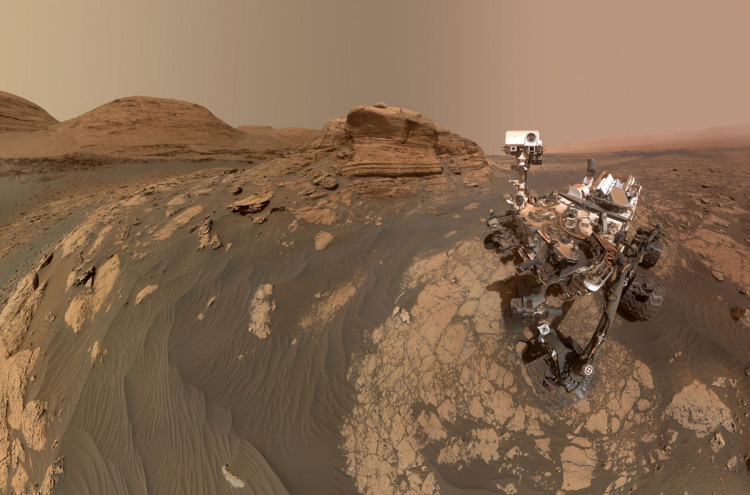The Curiosity rover team at NASA announced an intriguing signal that may or may not represent proof of past life - carbon trapped in a handful of rocks investigated by the rover substantially enriched in light carbon isotopes. The signal would be seen as significant evidence for ancient microbial life on Earth.
"All three of these scenarios are unconventional, unlike processes common on Earth," the researchers write in a new report published in the Proceedings of the National Academy of Sciences.
Carbon is made up of two stable isotopes, 12 and 13. Researchers can discover specifics about the carbon cycle that occurred by looking at the levels of each in a substance, even if it occurred a very long time ago.
"Those samples were caused by biological activity when methane was consumed by ancient microbial mats, but we can't necessarily say that on Mars because it's a planet that may have formed out of different materials and processes than Earth," Christopher H. House, lead study author and professor of geosciences at Pennsylvania State University, in a said in a statement.
Microbes prefer to grow in large colonies that essentially create mats just beneath the surface of the water in lakes on Earth.
The varying measurements of these carbon atoms could point to three different aspects of ancient Mars' history. Cosmic dust, UV degradation of carbon dioxide, or ultraviolet degradation of biologically produced methane are all possible sources of carbon.
According to House, the first scenario entails our entire solar system traveling through a galactic dust cloud every 100 million years. On rocky planets, the particle-heavy cloud could cause cooling events.
The second possibility involves UV radiation converting carbon dioxide on Mars into organic molecules such as formaldehyde. Additional research is also required for that hypothesis.
The third method of producing carbon has biological roots.
If this type of depleted carbon analysis were done on Earth, it would demonstrate that biologically produced methane was consumed by bacteria. Scientists cannot say for sure if enormous plumes of methane were once discharged from beneath Mars' surface, although Curiosity has previously discovered methane. They would have consumed this methane if this was the case and there were bacteria on Mars.
Another possibility is that the methane interacted with UV light, leaving a carbon trace on the surface of Mars.
Curiosity is currently collecting and analyzing samples, and in approximately a month, it will return to the pediment where some of the substances in this study were discovered.




